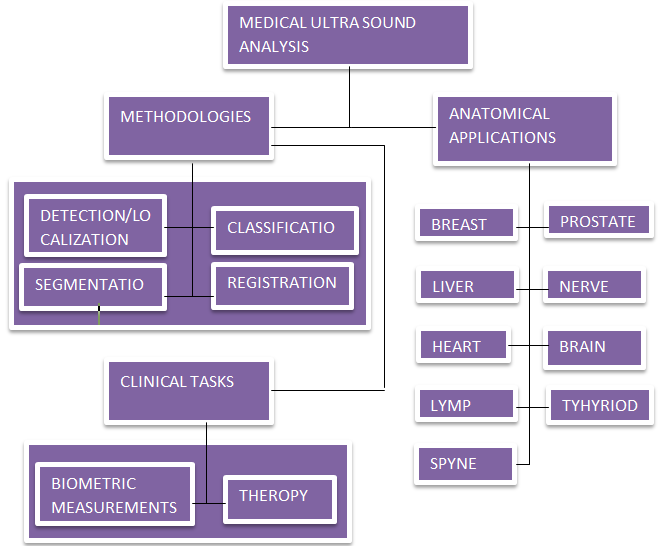Deep Learning in Ultrasound Imaging
Objective
In this study we aim to provide the reader with a broad understanding of the possible impact of deep learning on a variety of ultrasound imaging aspects, placing particular emphasis on methods that exploit both the power of data and signal structure (for instance sparsity in some domain) to yield robust and data efficient solutions.
Abstract
In this study analysis deep learning strategies in ultrasound systems, from the front end to advanced applications. Our goal is to provide the reader with a broad understanding of the possible impact of deep learning methodologies on many aspects of ultrasound imaging.
In particular, we discuss methods that lie at the interface of signal acquisition and machine learning, exploiting both data structure (e.g., sparsity in some domain) and data dimensional (big data) already at the raw radio-frequency channel stage. As some examples, we outline efficient and effective deep learning solutions for adaptive beam forming and adaptive spectral Doppler through artificial agents, learn compressive encoding for the color Doppler, and provide a framework for structured signal recovery by learning fast approximations of iterative minimization problems, with applications to clutter suppression and super-resolution ultrasound. These emerging technologies may have a considerable impact on ultrasound imaging, showing promise across key components in the receive processing chain.
Keywords: Beam forming; Compression; Deep Learning; Deep Unfolding; Doppler; Image Reconstruction; Super Resolution; Ultrasound Imaging.
NOTE: Without the concern of our team, please don't submit to the college. This Abstract varies based on student requirements.
Block Diagram

Specifications
SOFTWARE SPECIFICATIONS:
- Technology: Deep Learning, Computer Vision.
- Libraries: Pandas, Numpy, TensorFlow, OpenCV.
- Version: Python 3.6+
- Server-side scripts: HTML, CSS, JS
- Frame works: Flask
- IDE: Pycharm
HARDWARE SPECIFICATIONS:
- RAM: 8GB, 64-bit os.
- Processor: I3/Intel processor
- Hard Disk Capacity: 128 GB +
Learning Outcomes
- Scope of Real Time Application Scenarios
- How Internet Works
- What is a search engine and how browser can work?
- What type of technology versions are used?
- Use of HTML and CSS on UI Designs
- Data Parsing Front-End to Back-End
- Working Procedure
- Introduction to basic technologies used for
- How project works.
- Input and Output modules.
- Frame work use.
- Datasets properties.
- Deep learning algorithms.
- What is ultrasound imaging.
- Frequencies of ultrasound waves.
- About keras and tensor flow.
- About x-ray images.
- Project Development Skills:
- Problem analyzing skills.
- Problem solving skills.
- Creativity and imaginary skills.
- Programming skills.
- Deployment.
- Testing skills.
- Debugging skills.
- Project presentation skills.
- Thesis writing skills.





 Paper Publishing
Paper Publishing
